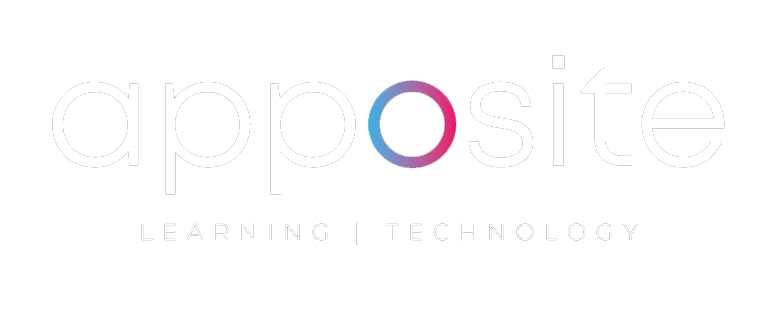What if you could master a new skill in the time it takes to drink your morning coffee?
Imagine this: You’re stuck in traffic, scrolling through your phone. Instead of watching another cute cat video (yes, we know they are addictive!), what if you could use those five minutes to pick up a new skill?
That’s the magic of microlearning, a learning revolution that’s shaking up classrooms and boardrooms worldwide.
But is it all hype, or does science support it?
In this blog post, you’ll discover the evidence-based truth behind microlearning’s effectiveness, learn how to distinguish fact from fiction in the seven most common misconceptions, and understand exactly when and how microlearning can transform your learning strategy.
Let’s dive into the facts, bust some myths, and see why microlearning might be your brain’s new best friend.
The Numbers Don’t Lie
The global microlearning services market is projected to reach approximately $2.96 billion in 2025, with expectations to grow at a Compound Annual Growth Rate (CAGR) of 13.13%, reaching $5.49 billion by 2030
Why? Because people love it, a whopping 94% of learners say microlearning fits perfectly into their busy lives.
Microlearning and the Modern Workforce
Today’s workforce is changing fast. Millennials, Gen X, and especially Gen Z crave short, interactive, tech-friendly learning. By 2035, Gen Z will make up 31% of the workforce. (Source)
Microlearning is a perfect fit, as studies have shown it boosts engagement among younger employees. Let’s get started.
Busting the Biggest Microlearning Myths
Myth 1: You can’t learn anything meaningful in short bursts, and complex topics are off-limits.
Reality: shows our brains focus best in 7 – 10 – minute bursts, and microlearning utilizes this natural rhythm to make lessons more effective. Major companies like to break down even the trickiest subjects into micro modules for their learners. The secret lies in smart chunking and breaking complex information into digestible pieces without skipping hard stuff. (Source)
Myth 2: It’s just a trendy fad that will fade away.
Reality: Far from being temporary, microlearning is backed by solid cognitive science. It leverages spaced repetition and the spacing effect, which have been proven to boost long-term memory retention. The approach counters the forgetting curve; we forget 50% of new information within an hour and 70% within a day. Microlearning’s short bursts and regular reviews help knowledge stick permanently. (Ebbinghaus Forgetting Curve)
Myth 3: Microlearning is only for Millennials and Gen Z.
Reality: While younger generations readily embrace microlearning, studies show that employees of all ages benefit from short, focused learning experiences that fit into their schedules. The key advantage isn’t generational preference; it’s the universal human need for manageable, non-overwhelming learning that can be integrated into busy lives.
Myth 4: Microlearning is just videos or quizzes.
Reality: Microlearning encompasses a rich variety of formats including podcasts, infographics, interactive scenarios, flashcards, simulations, and augmented reality experiences. It’s about delivering content in small, digestible pieces through the most appropriate medium for the learning objective, not limiting yourself to one format.
Myth 5: Microlearning replaces all other forms of training.
Reality: Microlearning works best as part of a blended learning strategy. It excels knowledge refreshers, skill reinforcement, and just-in-time learning, but complex skills and behavioral changes often require deeper, more immersive learning experiences. The most effective L&D programs combine microlearning with other methodologies.
Myth 6: Microlearning can’t measure learning outcomes effectively.
Reality: platforms offer robust analytics and assessment tools that track engagement, comprehension, and application in real-time. Micro-assessments, knowledge checks, and behavioral observations can provide more frequent and accurate learning data than traditional end-of-course evaluations.
Myth 7: Microlearning has no social learning component.
Reality: nges, knowledge sharing, and community-driven content creation. Learners can engage with bite-sized content while still benefiting from social interaction and collective learning experiences.
Let’s take an example
A global organization implements a microlearning program to train employees on the latest features in Microsoft Teams using 5–7 minute bite-sized modules on topics like setting up channels, using tags, and managing team files.
To enhance engagement, they integrate social learning through:
- Dedicated Yammer threads or Teams channels after each module
- Peer discussions on real-world applications
- Sharing of shortcuts and productivity hacks
- Weekly “Team Hacks Challenge” for teams to suggest feature optimizations
- Interactive features like likes, comments, and upvotes to crowdsource knowledge
- SME participation for real-time guidance and expert insights
This approach combines microlearning with social interaction, promoting collaboration, continuous learning, and a robust knowledge-sharing culture throughout the organization.
Why Microlearning Works: The Science
Microlearning succeeds because it aligns with how our brains naturally process and retain information. It utilizes spaced repetition, revisiting concepts over time rather than all at once, which taps into the spacing effect proven to boost long-term memory. The approach also leverages the principles of cognitive load theory, preventing information overload by presenting one focused concept at a time.
- Maximizes retention: Regular, spaced reviews combat the forgetting curve
- Fits busy lifestyles: Learn during commutes, breaks, or any available moment
- Builds learning momentum: Each quick win motivates continued engagement
- Enables just-in-time learning: Access relevant information exactly when needed
- Eliminates cognitive overload: Focus on one idea at a time for better comprehension
- Supports diverse learning styles: Multiple formats accommodate different preferences
Bottom line: Microlearning isn’t about cutting corners; it’s about learning smarter, not harder, based on cognitive science and real-world applications.
Are you ready to make every minute count? At Apposite Learning, we know how to create microlearning that meets not only the needs of your learners but also those of your organization. What you get is a win-win situation where learning meets the end goals of your organization.
We’ve helped many of our clients make their learning more engaging through microlearning. Let’s get you started on your microlearning journey. Ready to unlock the power of microlearning? Get in touch for a free consultation and start transforming your learning strategy today!

